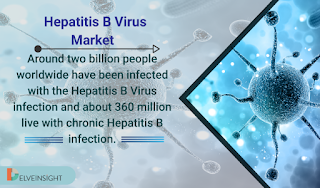Erosive Esophagitis Market Insights Report 2030 | Erosive Esophagitis Market Research and Forecast Report 2030
Gastroesophageal reflux disease (GERD) is caused by an abnormal reflux of gastric contents into the esophagus. According to the presence of esophageal mucosal breaks; GERD can be divided into two groups, erosive esophagitis and nonerosive reflux disease (NERD).
The term “erosive esophagitis,” which denotes esophageal mucosal erosive changes, has several synonyms: recurrent, reflux, regurgitant, peptic and marginal esophagitis. The term “erosive esophagitis,” is used for it covers mucosal changes other than erosion or ulceration and occurs without reflux or peptic activity.
DelveInsight's "Erosive Esophagitis (EE) Market Insights, Epidemiology, and Market Forecast-2030" report delivers an in-depth understanding of the Erosive Esophagitis (EE) , historical and forecasted epidemiology as well as the Erosive Esophagitis (EE) market trends in the United States, EU5 (Germany, Spain, Italy, France, and United Kingdom) and Japan.

Geographies covered are:
The United States, EU5 (Germany, France, Italy, Spain, and the United Kingdom), and Japan
Click here and get access to free sample pages of the report.
Erosive Esophagitis (EE) Disease Overview
Erosive esophagitis is diagnosed based on the Los Angeles classification and was divided into two categories: mild (grades A and B) and severe (grades C and D).
Patients with GERD with the typical reflux syndrome associated with erosive esophagitis and hiatal hernia can have mucosal eosinophilia, which often is confined to the distal esophagus. It is not clear what proportion of patients with GERD present with these features, but it is likely to be less than 10%.” In the same study, it was found that from 2003 to 2006, there were approximately 10,570 hospital admissions annually for erosive esophagitis.
Acid suppression with a H2 receptor antagonists (H2RAs) and proton pump inhibitors (PPIs) are a standard treatment for gastroesophageal reflux disease and erosive esophagitis in adults and increasingly is becoming first-line therapy for children aged 1–17 years.
The DelveInsight Erosive Esophagitis (EE) market report gives a thorough understanding of the Erosive Esophagitis (EE) by including details such as disease definition, symptoms, causes, pathophysiology, diagnosis and treatment.
Erosive Esophagitis (EE) Epidemiology
The most commonly encountered predisposing factors for Erosive Esophagitis are those related to defects at the esophagogastric junction, such as esophageal hiatal hernia, anatomic variants (short esophagus, intrathoracic stomach, direct esophagogastric junction), and physiologic dysfunction or deglutinative "chalasia“. A total of 23 contributing factors have been encountered, the most prominent of which are hyperacidity, hypersecretion, changes in esophagogastric tonicity, increase in intragastric pressure, and mucosal trauma.
The Erosive Esophagitis (EE) epidemiology division provide insights about historical and current Erosive Esophagitis (EE) patient pool and forecasted trend for every seven major countries. It helps to recognize the causes of current and forecasted trends by exploring numerous studies and views of key opinion leaders.
Key Findings
· In persons with GERD symptoms, about 20% are found to have erosive esophagitis, while ulcers or strictures are found in less than 5% of all patients with erosive esophagitis.
· As per findings of a study titled “High Rate of Clinical and Endoscopic Relapse After Healing of Erosive Peptic Esophagitis in Children and Adolescents” , (2014), Children with healed erosive esophagitis have up to 83% clinical relapse and of the 83%, 45% had endoscopic relapse.
Request for free sample pages of the report: https://www.delveinsight.com/sample-request/erosive-esophagitis-market
Erosive Esophagitis (EE) Drug Chapters
The dynamics of the Erosive Esophagitis market is anticipated to change in the coming years owing to the approval of the upcoming therapy. Key player, such as Takeda/Phathom Pharmaceutical, Ironwood Pharma, Daewoong Pharmaceutical, Luoxin Pharmaceutical and others is involved in developing a drug based on a novel class of P-CABs.
Erosive Esophagitis (EE) Market Outlook
The spectrum of GERD ranges from nonerosive to erosive or complicated disease (ulcer, columnar metaplasia, and stricture), each of which is thought likely to progress if either left untreated or not treated adequately. The goals of treating GERD are to resolve symptoms, heal esophagitis, and prevent complications. Treatment options include lifestyle modifications, medical management with antacids and antisecretory agents, and mechanical therapies.
Owing to their superior ability to inhibit gastric acid secretion compared with H2 receptor antagonists (H2RAs), proton pump inhibitors (PPIs) remain the mainstay of long-term therapy for GERD and hence for Erosive Esophagitis. Studies comparing H2-blockers and PPIs have demonstrated that the latter has superior healing rates and decreased relapse rates.
The Erosive Esophagitis market outlook of the report helps to build the detailed comprehension of the historic, current, and forecasted Erosive Esophagitis (EE) market trends by analyzing the impact of current therapies on the market, unmet needs, drivers and barriers and demand of better technology.
Expected launch of upcoming therapies shall fuel the growth of the Erosive Esophagitis market during the forecast period, i.e., 2020–2030.
To download sample pages of our market report, visit: https://www.delveinsight.com/sample-request/erosive-esophagitis-market
Visit our repository of reports: https://www.delveinsight.com/report-store.php

Comments
Post a Comment